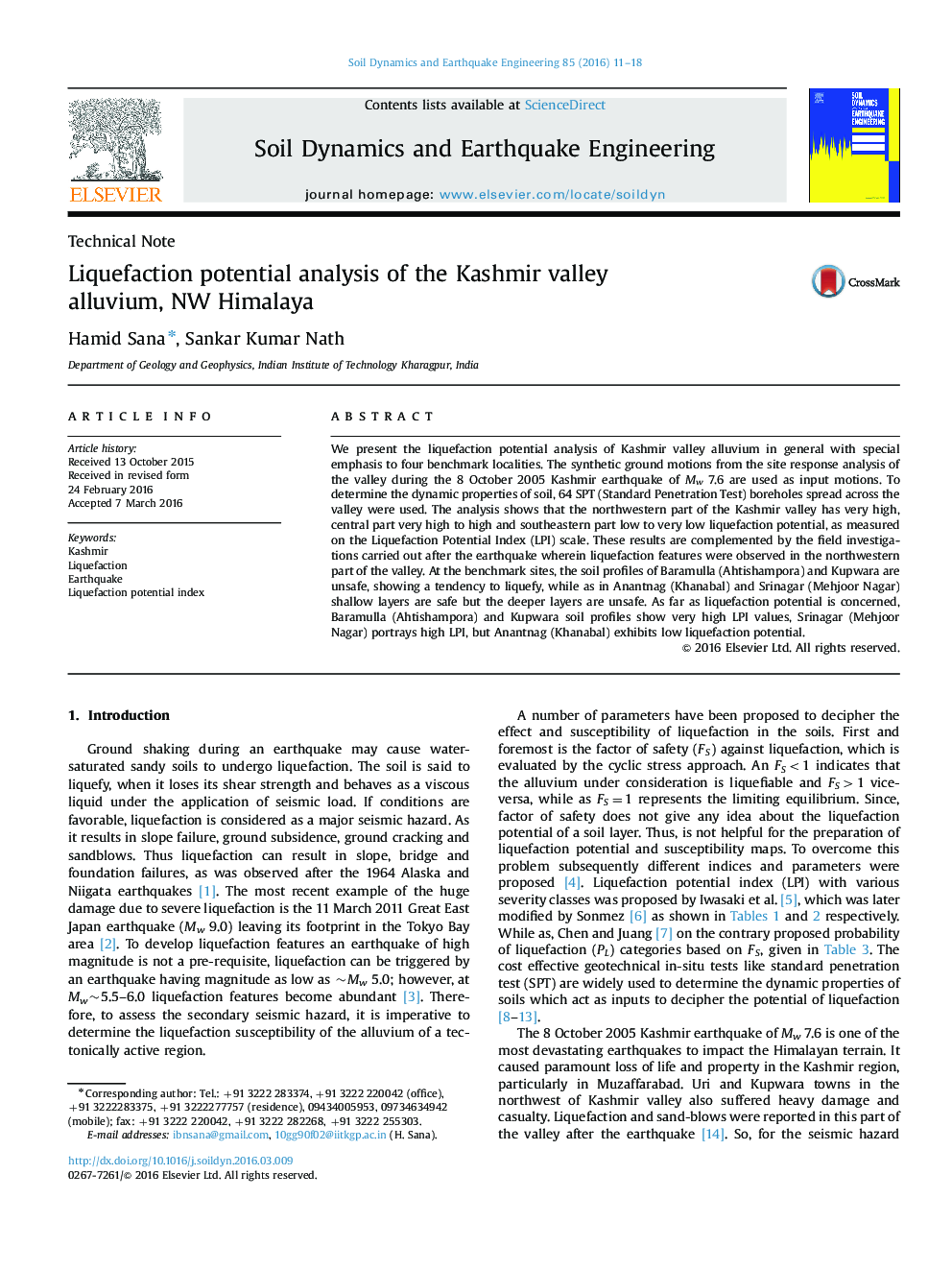| کد مقاله | کد نشریه | سال انتشار | مقاله انگلیسی | نسخه تمام متن |
|---|---|---|---|---|
| 6771451 | 512757 | 2016 | 8 صفحه PDF | دانلود رایگان |
عنوان انگلیسی مقاله ISI
Liquefaction potential analysis of the Kashmir valley alluvium, NW Himalaya
ترجمه فارسی عنوان
تجزیه و تحلیل پتانسیل رواناب آلیوی دره کشمیر، هیمالیا
دانلود مقاله + سفارش ترجمه
دانلود مقاله ISI انگلیسی
رایگان برای ایرانیان
کلمات کلیدی
کشمیر، تبدیل به مایع، زمین لرزه، شاخص بالقوه مایع شدن،
موضوعات مرتبط
مهندسی و علوم پایه
علوم زمین و سیارات
مهندسی ژئوتکنیک و زمین شناسی مهندسی
چکیده انگلیسی
We present the liquefaction potential analysis of Kashmir valley alluvium in general with special emphasis to four benchmark localities. The synthetic ground motions from the site response analysis of the valley during the 8 October 2005 Kashmir earthquake of Mw 7.6 are used as input motions. To determine the dynamic properties of soil, 64 SPT (Standard Penetration Test) boreholes spread across the valley were used. The analysis shows that the northwestern part of the Kashmir valley has very high, central part very high to high and southeastern part low to very low liquefaction potential, as measured on the Liquefaction Potential Index (LPI) scale. These results are complemented by the field investigations carried out after the earthquake wherein liquefaction features were observed in the northwestern part of the valley. At the benchmark sites, the soil profiles of Baramulla (Ahtishampora) and Kupwara are unsafe, showing a tendency to liquefy, while as in Anantnag (Khanabal) and Srinagar (Mehjoor Nagar) shallow layers are safe but the deeper layers are unsafe. As far as liquefaction potential is concerned, Baramulla (Ahtishampora) and Kupwara soil profiles show very high LPI values, Srinagar (Mehjoor Nagar) portrays high LPI, but Anantnag (Khanabal) exhibits low liquefaction potential.
ناشر
Database: Elsevier - ScienceDirect (ساینس دایرکت)
Journal: Soil Dynamics and Earthquake Engineering - Volume 85, June 2016, Pages 11-18
Journal: Soil Dynamics and Earthquake Engineering - Volume 85, June 2016, Pages 11-18
نویسندگان
Hamid Sana, Sankar Kumar Nath,
